Planting beets in spring: step by step instructions
One of the healthiest vegetables is considered beets... Its valuable qualities have been known since ancient times. The rich content of vitamins and microelements in the garden culture make it a necessary product for the nutrition of a modern person. It is not difficult to grow a vegetable - plant and harvest on time.
To strengthen the heart muscle, nervous system, normalize the production of hormones, increase immunity, you need to include beet salads in the menu. The root vegetable helps to cleanse the body of toxins and toxins, to bring body weight back to normal. There are several types of vegetables - table, sugar, fodder beets. Table varieties are used for food, which retain their useful properties even after cooking.
Content:
- Review of the best, productive varieties of beetroot
- Preparing seeds and soil for planting a vegetable
- Terms and rules for sowing vegetable crops
- We competently take care of vegetable plantings
- Disease prevention and beet pest control
- Harvesting, ways of storing root crops
Review of the best, productive varieties of beetroot
Popular varieties of vegetable crops differ in shape, weight of the root crop, color shades, ripening times:
- In Egyptian flat beets, uniformly colored dark red fruits reach a weight of up to half a kilogram. They are well kept, have excellent taste, tenderness, juiciness.
- The red ball ripens quickly 60-100 days after germination. The variety is characterized by a lack of flowering, it is resistant to drought and frost.
- Mid-season species include Bordeaux with rounded, slightly flattened roots. Attracts the high sugar content of the vegetable, the uniformity of color, the density of the pulp. The high yield of the variety allows you to collect up to eight kilograms of root crops from one square meter.
- The Cylinder variety has a long growing season, but after 130 days it will delight you with tender, juicy beetroot with a rich taste. Yields of cylindrical maroon tubers reach ten kilograms.
- Renova's fruits are even, smooth, pink in color. In addition to consistently high yields, the variety is distinguished by long-term storage - up to seven months in comfortable conditions.
It is necessary to choose a variety of beets for sowing taking into account the climatic conditions of the region, so that the plant has time to gain the necessary weight, it is tasty and juicy.
Preparing seeds and soil for planting a vegetable
Beetroot are classified as biennial plants that bear fruit in the first year, and bloom and give seeds in the second. The plant reproduces in a seed way. It is best to plant the vegetable in the spring, after having done the preparatory work.
The seeds of the plant must undergo a vernalization procedure, germination, which will significantly accelerate their germination and increase productivity. To do this, fill the material with water, covering the dishes with a damp thin cloth. The sprouting process will take several days, so you need to mix the seeds every day until the sprouts hatch.
Disinfection also needs to be done before sowing.
Seeds are placed in a thermos, flooding them with water at a temperature of fifty degrees.After keeping them for half an hour, the water is drained, and the seeds are dried by spreading them out on fabrics. The swollen seed for hardening is placed in the refrigerator for a week. Many people use soaking seeds for a day in a solution with a growth stimulator "Energen" or saturating them with oxygen using an aquarium compressor. These actions will help increase the germination of beet seeds, but here it is important not to overdo it, use one thing.
A site for planting a vegetable is chosen with a fertile soil permeable to air and water. In terms of acidity, the soil must be neutral, otherwise the tubers will be born small and tough. Humus or sod land is added to loamy soils in a bucket per square meter. The dense soil structure can be lightened with dry coarse sand. They start planting a vegetable plant when the soil warms up, since the beets are afraid of frost. The predecessors of beets can be planting Luke, cabbage, peas, pumpkin, cucumbers... The vegetable grows well together with carrots, which is planted seven to ten days earlier.
Terms and rules for sowing vegetable crops
The main period for planting beets in spring is the period from early to mid-May, depending on the weather. The air temperature should not drop to five degrees Celsius at night. A sharp decrease in it will lead to the premature appearance of flowers on the plant.
The method of sowing beets is one-line with a row spacing of 45 centimeters.
Seeds are buried to a depth of no more than four centimeters. If there is a threat of frost, you can cover the plantings with polyethylene film. In areas with cold climates, you can first grow beet seedlings in boxes, then transfer them to the open air.
Seedlings will be ready for transplanting when four true leaves appear on them. It is necessary to plant beets on time so that its tender sprouts do not die from the influence of low temperatures.
We competently take care of vegetable plantings
Quality care beets consists of the following activities:
- Thinning of plants is important for the weight gain of the root crop, for them to get enough nutrients. The first time the procedure is carried out by one or two centimeters, and the second - by ten. Pulling out the shoots, they are planted in place of the dead shoots. In this case, the seedlings must be shaded for three days.
- Top dressing of a vegetable begins with the appearance of two leaves on the plant. The fertilizer complex consists of 10 grams of ammonium nitrate, 25 grams of superphosphate, and 15 grams of potassium salt. Minerals are diluted in a bucket of water. They feed the second time after three weeks, taking the components in doubled quantities.
- Water the vegetable beds as the top layer dries. Excessive moisture is just as harmful to the plant as drought.
- For better moisture retention, you can plant to promulgate with sawdust after thinning.
- Beetroot loves weeding, so it is carried out regularly along with loosening the soil. It is necessary to loosen the plantings after watering or precipitation, stopping the procedure after closing the leaves of the plant.
Taking care of the plant is simple, effortless and cost-effective.
Disease prevention and beet pest control
Beets fall ill more often due to a lack of minerals in the soil, poor care.
- The lack of the boron element is the cause of phomosis, in which brownish spots with black dots develop in the lower part of the rosette of leaves. Root crops are affected from the inside, hard tissues of black color are formed in the pulp. Diseased beetroots are detected during storage. Wet, cool weather favors the development of the disease. Having fed the plants with brown, the beet plantings return to normal growth and development. To prevent infection with fomozom, vegetable seeds are soaked in a one percent solution of boric acid - one gram per hundred milliliters of water.
- The main symptoms of peronosporosis, downy mildew, include curling, drying of leaves, the appearance of a grayish coating on them.Fungus-infected soil, seeds cause pathological changes in vegetable crops, especially during storage. Beets treated with fungicides in advance will then give healthy fruits.
- For cecosporosis, damage to leaves, petioles, and stems is inherent. Fungal infection is identified by rounded light spots with a reddish or brown border. In a grayish-white bloom on the leaves there are spores of the pathogen. Planting beets can be protected from disease by weeding, liming the soil in the fall.
- The black leg, or root-eater, leads to the death of vegetable crops. The appearance of the disease can be avoided by introducing a boron solution, thinning seedlings, loosening the earth crust.
Common beet pests:
- Of the pests, the click beetle most often affects vegetable beds, or wireworm... You can destroy it by spreading the bait in the form of carrot and potato tops.
- Beet aphids are noticeable by the curling of the leaves of the plant. A decoction of tobacco with soap will help to destroy the pest - ten grams of laundry soap and fifty grams of tobacco per liter of water.
- Beet fleas feed on the inside of the leaves, jumping from one plant to another. Eliminate them by sprinkling the plantings with tobacco dust, wood ash.
Vegetable pests are effectively fought by spraying with one percent Hexachlorane. Proper preparation of seeds for planting, their dressing often saves both from diseases and pests.
Harvesting, ways of storing root crops
Root crops are harvested after the tops begin to turn yellow and dry out. This happens in late August or early September. Do not pull with harvesting, otherwise frost can damage the beets.
Dry weather will allow not only to harvest the vegetable, but also to dry it in the beds.
Before laying the culture in the cellars for storage, it is necessary to cut off the tops with a sharp knife, leaving it two centimeters. As soon as the cuts are dry, the roots are placed in storage, where the temperature will not be higher than three degrees Celsius. Before that, it is necessary to sort by removing the damaged and diseased beetroot. They can be placed in a plastic bag in the refrigerator, then used to make soups. The rest of the vegetables will be perfectly preserved if the room is ventilated, cleaned of debris, mold. For the container in which the vegetable is laid, boxes are used. Beets in them are covered with wet sand or earth.
During the entire storage period, it is necessary to check the root crops, removing the rotten ones, damaged by the fungus. The vegetable is well stored in thick plastic bags, ajar on top, which are placed on the shelves. Do not store beets with other vegetables. The only neighbor of culture can be potato... In addition to these methods of storing vegetables, you can dry, pickle root crops.
More information can be found in the video:



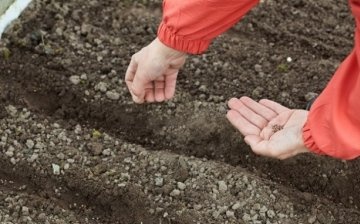
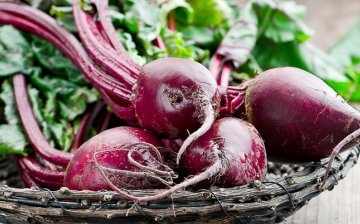
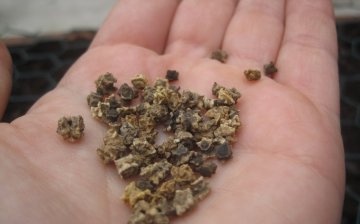
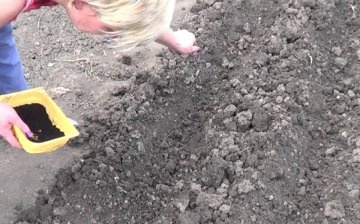
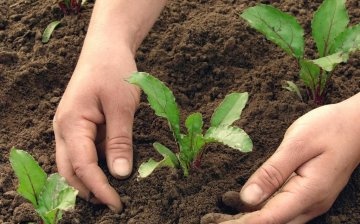
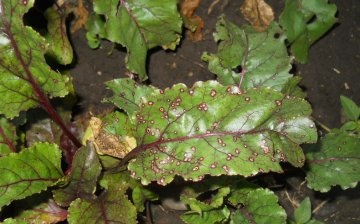
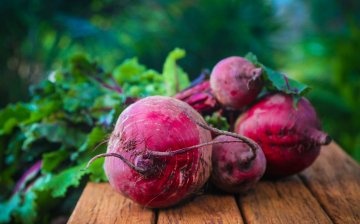








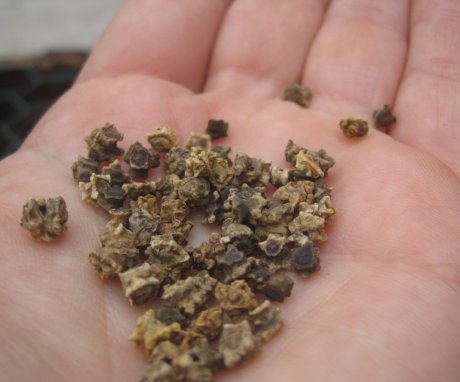
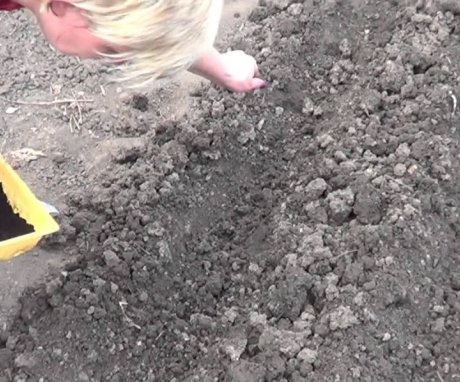

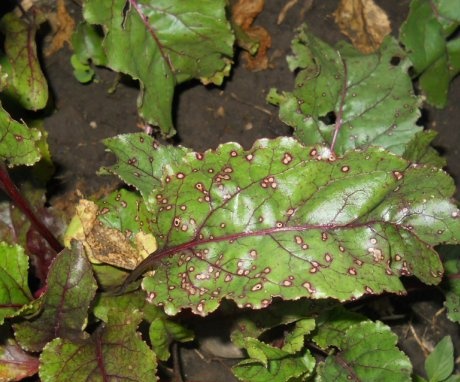
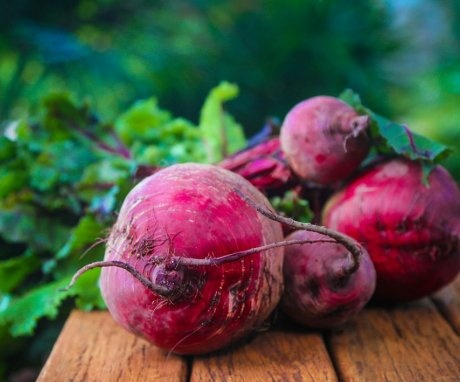
In our garden, beets grow very well. She is not very demanding on lighting, and therefore the plant can be planted in partial shade in the garden. The root crop grows well in our country, but it does not grow especially large, probably the soil is heavy and acidic.
We get beets better through seedlings, by this time the greenhouses are already covered, so they germinate in them. We also noticed that beets grow best in small beds. Therefore, we do not assign a full-fledged ridge to it, but sow either along the edges of other crops, or simply in long rows. And given its unpretentiousness to the sun, it turns out that it grows in various places on the site. But there is a plus in this - even in a poor harvest somewhere, it grows out. Although, to be honest, the most delicious is the average size.